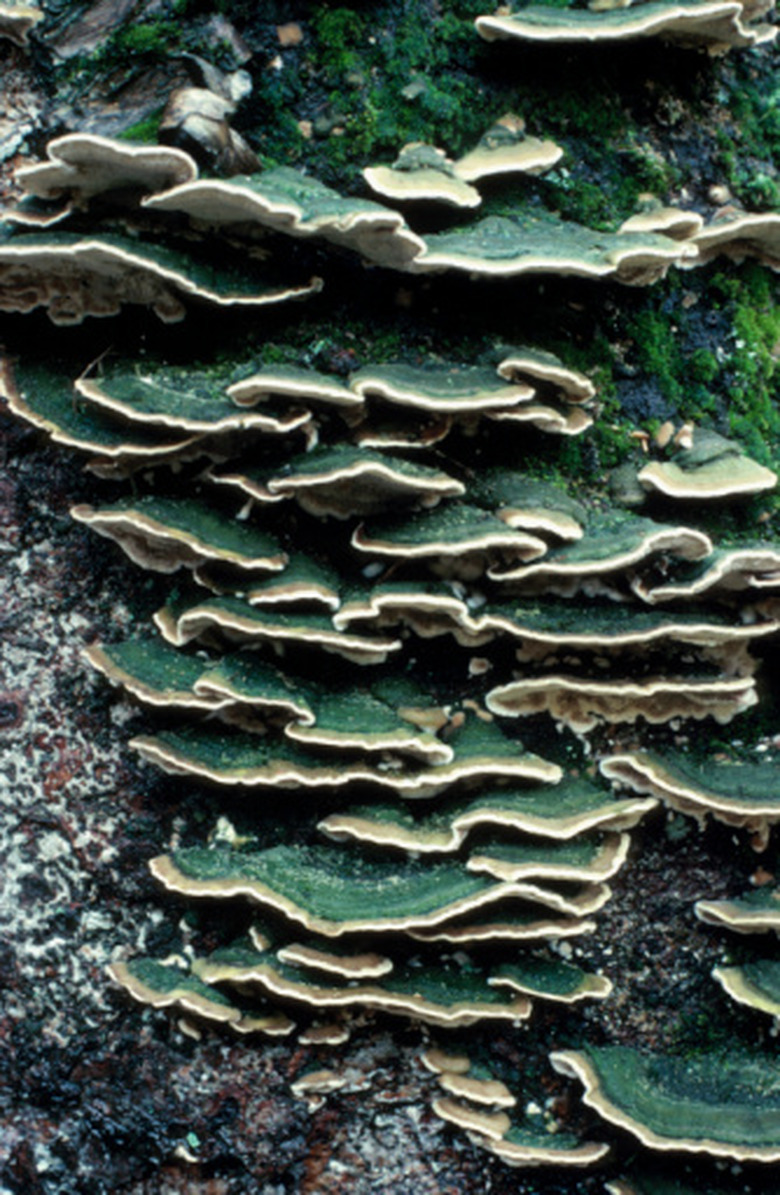Types Of Fungi Plants
Fungi are unicellular and multicellular plantlike organisms that do not have chlorophyll and are classified into their own kingdom. There are more than 100,000 fungi, playing a large role in the nutrient cycle and in the decomposition of organic materials. Fungi are used in medicines, foods and some industrial processes also. There are four divisions of fungi: Deuteromycota, Zygomycota, Ascomycota and Basidiomycota.
Structure
Structure
Fungi are eukaryotic beings. The cellular walls are made of chitin. Fungi are classified as heterotrophic due to the way they get obtain nutrition. Fungi are decomposers — they absorb their nutrition by decomposing organic and inorganic materials. Fungi reproduce sexually and asexually by producing spores.
Deuteromycota
Deuteromycota
Deuteromycota fungi are also called sac fungi, because they have a saclike appearance. This group of fungi can be found living on humans, plants and animals. The sexual mode of reproduction of Deuteromycota fungi is not entirely known, so they are classified as imperfect fungi. This form of fungus is responsible for the ailments like athlete's foot and jock itch in humans.
Ascomycota
Ascomycota
Ascomycota make up the largest group in the fungi kingdom. Ascomycota can reproduce sexually and asexually. They are parasitic to some plants and survive by decomposing their hosts. They are present in the form of yeasts. Some beneficial forms of Ascomycota are baker's yeasts for foods and medicines like penicillin.
Zygomycota
Zygomycota
Zygomycota reproduce sexually by creating zygospores. Zygomycota tend to reside and gain their nutrition on decayed matter. They often form symbiotic relationships with their hosts, including plants and animals. Many yeasts and molds that are found on fruits, breads and sugars are Zygomycota.
Basidiomycota
Basidiomycota
Basidimycota make up the second largest group of fungi. The balloon or clublike shape of the reproductive organ is distinctive to fungi belonging to this group. Basidiomycota reproduce asexually by producing basidospores. Some forms of Basidomycota are parasitic on to plants. Basidimycota fungi include mushrooms, certain types of yeasts, plant rusts and smuts.
Roles
Roles
Fungi play important roles in the environment. Fungi perform four kinds of roles in the environment: parasite, decomposer, symbiotic and necrotroph. The parasitic relationships that they form with their hosts are not lethal. As decomposers, fungi break down all kinds of dead matter for nutrition. It is through decomposition that we get some of our antibiotics for medical use. In plants there are fungi that form necrotrophic relationships. These fungi kill the host and then ingest it. The symbiotic relationships that some fungi form with their hosts often started off as parasitic. In this role the plant provides food for the fungi; in return the fungi help it to survive.
Cite This Article
MLA
Baron, Camille. "Types Of Fungi Plants" sciencing.com, https://www.sciencing.com/types-fungi-plants-8580175/. 24 April 2017.
APA
Baron, Camille. (2017, April 24). Types Of Fungi Plants. sciencing.com. Retrieved from https://www.sciencing.com/types-fungi-plants-8580175/
Chicago
Baron, Camille. Types Of Fungi Plants last modified March 24, 2022. https://www.sciencing.com/types-fungi-plants-8580175/
